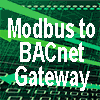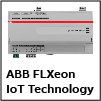
|
June 2022 |
Babel Buster Network Gateways: Big Features. Small Price. |
| What is AI? “Artificial Intelligence (AI) is the part of computer science concerned with designing intelligent computer systems, that is, systems that exhibit characteristics we associate with intelligence in human behavior – understanding language, learning, reasoning, solving problems, and so on.” |
INTERVIEW
Social Handles:
1)
| Articles |
| Interviews |
| Releases |
| New Products |
| Reviews |
 |
| Editorial |
| Events |
| Sponsors |
| Site Search |
| Newsletters |

|
| Archives |
| Past Issues |
| Home |
| Editors |
| eDucation |

|
| Links |
| Software |

|
Ken Sinclair - What
is AI?
Mehdi Nourbakhsh - Many
definitions of it exist, but I lean towards a scientific definition of AI. In
1981, scientists Avron Barr and Edward A. Feigenbaum defined it as follows:
“Artificial Intelligence (AI) is the
part of computer science concerned with designing intelligent computer systems,
that is, systems that exhibit characteristics we associate with intelligence in
human behavior – understanding language, learning, reasoning, solving problems,
and so on.”
I
like this definition because it tells you that AI is a branch of science in
which scientists design computer systems that mimic human intelligence.
To
help you remember what AI is, I want you to think about it as a tree. This tree
has several roots: philosophy, logic and mathematics, computation, cognitive
science, biology, neuroscience, and evolution. The branches of this tree are
sub-fields of AI, such as computer vision, machine learning, speech recognition
and synthesis, search and optimization, knowledge representation and reasoning,
and robotics. Each of these branches has its own branch and sub-domain, or
fields. For instance, the machine learning branch has reinforcement learning,
supervised learning, and unsupervised learning as sub-branches.
Ken Sinclair -
How
can AI help the AEC industry?
Mehdi Nourbakhsh - AEC
projects are becoming more complex, and clients are demanding more. Our
productivity across the AEC industry is low because of the lack of skilled
labor and the bespoke nature of complex projects. Compared to the risks taken,
companies have a low profit margin because of bidding wars and the high cost of
design and construction labor and material.
With
the growth in population and changes in climate, we need to do more – a lot
more. And we need to do it with very limited resources, and in a very short
period of time.
AI
is not a silver bullet to solve all the problems ahead of us. But it is an
underutilized technology that can help you to reduce the complexity of projects
by running various scenarios and helping you make better decisions. It can help
you improve the performance of a project either by giving you quick feedback
about your design (e.g., the amount of embodied carbon) or helping you run your
projects based on information. And, finally, it can help you to reduce costs.
All of these things can happen while still fulfilling your obligations to your
client and your company, and also have a positive environmental impact.
Ken Sinclair - How
should AEC companies invest in AI?
Mehdi Nourbakhsh - You
as the leaders an AEC company might be asking yourself, “I’m working in the AEC
industry, not in the tech industry; why should I have a data and AI investment
strategy?” Before answering this question, I want to clarify that when I say
you should invest in your data and AI, I don’t mean you should plan and build
the next flying robot or autonomous bulldozer. Let the tech companies do that
for you. What I mean is that you should have a strategy to find opportunities
to use AI in areas where you want to gain or hold your competitive advantage in
the market – for instance, if you have a secret sauce in estimating projects,
designing buildings, or managing projects, and want to scale it across your
company at your portfolio level.
Ken Sinclair - What
are some successful examples using AI in design and construction?
Mehdi Nourbakhsh - In
my book, Augment It, I shared several AI projects that brought or can
bring significant return on investment to AEC companies. For instance:
·
Teams
at McCarthy are working on developing an AI recommendation engine that helps
designers decide on pre-prefabrication product options at the conceptual design
phase.
·
Teams
at Perkins & Will are using AI to design high-performing buildings by
reducing the time it takes to run an energy simulation from 20 to 30 minutes to
less than a second.
·
Teams
at Swinerton used an AI system that went to the construction site and capture
what is completed on site.
·
Teams
at Haskell created an AI system to help improve the welding inspection process
and reduce the cost of operation by analyzing welding photos sent by welders
when they complete each job.
Ken Sinclair - How
can AEC companies get started?
1. Mehdi Nourbakhsh -
Learn
what AI is:
The very first step is to learn what AI is and is not— and what it can or
cannot do for your company. Reading AI books written for CEOs and company
executives, taking courses and workshops, and talking to AI experts can help
you build a foundation of AI knowledge.
2.
Find
use cases:
Then, you need to find AI use cases based on your business strategy in the
market. This step is critical to the success of your project. I strongly
recommend to CEOs and executives to find AI uses in a full-or half-day workshop
facilitated by trusted AI experts and business leaders. The goal of such a
workshop is for participants to brainstorm ideas, assess their technical
feasibility and business viability, and select the easiest one with the most
return on investment (at least 5X-10X ROI) for execution.
3.
Develop
an AI solution:
Next, you should develop a technology solution to verify the technical
feasibility and business viability of your use case before scaling it across
your company or distributing it to your prospects. Building an AI solution is
both an art and a science. I highly recommend working with AI consultants to
develop the right solution for your business.
[Home Page] [The Automator] [About] [Subscribe ] [Contact Us]